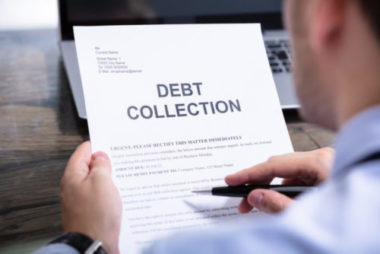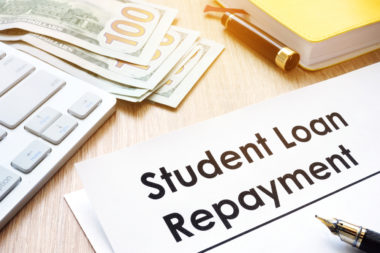Revolving debt, also known as revolving credit, is a type of debt by which you borrow against a credit limit. Common types of revolving debt can include credit cards, home equity lines of credit (HELOC), and personal lines of credit.
When managed responsibly, revolving debt can be a great way to increase your credit score and make purchases regardless of your cash on hand. When managed irresponsibly, however, revolving debt can have dangerous consequences, leading to poor credit, accumulating interest, and a mountain of unpayable debt. In order to utilize revolving debt safely and effectively, it’s important to understand just how revolving debts work.
Table of Contents
Revolving Debt vs. Installment Loans
If you’re considering borrowing money or opening a line of credit, you may be wondering what the difference is between revolving debt and installment loans. While revolving debt and installment loans both allow you to borrow money to cover expenses instead of spending cash, they have significant differences when it comes to paying them back. They’re also usually weighted differently on your credit score, with utilization of revolving debt given a much higher level of importance in most scores.
Revolving Debt
- Revolving debt is a line of credit — often in the form of a credit card, HELOC, or personal line of credit — that you can use to finance many types of purchases.
- Each time you pay off your revolving debt, additional credit is available to you, without having to reapply.
- Revolving debts often have a required minimum monthly payment that can be dependent on the size of your balance and the terms of your agreement.
- Revolving debt has higher interest rates in many cases.
- Revolving debt has a greater impact on your credit score.
Installment Loans
- Installment loans are for a fixed amount, often to cover a major purchase like a car, a house, or college tuition.
- Installment loans have a fixed monthly payment plan.
- Once you pay off an installment loan, you no longer have to make payments and the loan is considered complete.
- Installment loans often have lower interest rates than revolving debt.
- Installment loans usually have a lesser impact on your credit score.
Pros and Cons of Revolving Debt
While utilizing revolving debt has a lot of advantages and can be a great way to regulate your cash flow while developing good credit, there are also significant risks. It’s important to be informed about the best practices for utilizing revolving debt in order to avoid ending up in financial trouble.
Benefits of Revolving Accounts
Revolving accounts like those attached to credit cards are a popular financial tool for good reason: An open line of credit increases your liquidity, allowing you to finance purchases regardless of your cash on hand. This makes revolving debt an attractive option for people whose income may fluctuate or who have erratic pay periods, allowing them to make purchases on credit with the confidence that they’ll be able to pay off the debt later.
Revolving debt also offers both stability and flexibility to borrowers. Because revolving debt like credit cards feature recurring access, there’s no need to reapply each time you need money. Instead, once you open a line of credit, it is always available to you as long as you haven’t yet reached your credit limit.
Unlike cash, debit cards, or checks, revolving debts also offer a measure of security that these other methods lack. Payment methods like credit cards often offer additional protections in case of theft, fraud, or security breaches. This enables you to dispute erroneous purchases and get your money back if someone has made an unauthorized purchase on your account.
Risks of Revolving Debt
While there are definitely benefits to revolving debt, there are also some significant risks that are important to be aware of. Most importantly, revolving debt accumulates interest, often with higher interest rates than a traditional loan. In order to avoid financial trouble, it’s a good idea to pay off your balance each month whenever possible so that you don’t end up paying more than you might expect in interest.
Revolving debt is also risky in that it often allows you to spend a significant amount of money in a short amount of time, regardless of your financial situation. If you’re not careful, you can quickly outspend your income and be stuck with a pile of debt that can harm your financial situation. In order to make the most of revolving debt, it’s important to spend responsibly and within your means.
Unlike installment loans, which have a fixed payment plan, payment plans for revolving debts can be variable depending on the size of your balance and the terms of your agreement. The due dates for each line of credit may be different, along with different minimum monthly payments.
It can be easy to lose track of what you should be paying each month, resulting in missed payments and overspending. If you’re considering opening up a line of credit, you should make it a practice to check in monthly to ensure that all your accounts are in good order.
Revolving Debt on Your Credit Report
Revolving debt can often have a significant impact on your credit score both positively and negatively. In particular, credit cards can have an outsized impact on your score, as lenders often view them as a good indicator of your risk as a borrower. In fact, it’s often the second most important factor on your credit score, after missed payments.
Responsible use of revolving debt can be a good thing for your credit score. If you maintain a credit utilization ratio of below 30%, make all of your monthly payments, and use your card regularly, it’s usually a sign that you’re a responsible borrower and can help to raise your credit score and build good credit.
If you use your credit card irresponsibly, however, it can have a negative impact on your credit score. If you have a high credit utilization ratio, miss any monthly payments, or continue to accumulate debt, it can signal to lenders that you’re a financial risk. Using revolving debt irresponsibly may not only lower your credit score but also make it more difficult to get future loans and lines of credit. A large amount of credit card debt can also quickly accumulate interest and be difficult to pay off, especially if you’re already struggling.
While revolving debt does pose potential risks, it can be a great way to build credit while remaining financially liquid when used appropriately. Some types of revolving debt, like certain credit cards, also provide additional benefits, like rewards points or cashback for purchases. Ultimately, revolving debt can be an effective financial tool — but only with forethought and careful use.
Image Source: Deposit Photos





